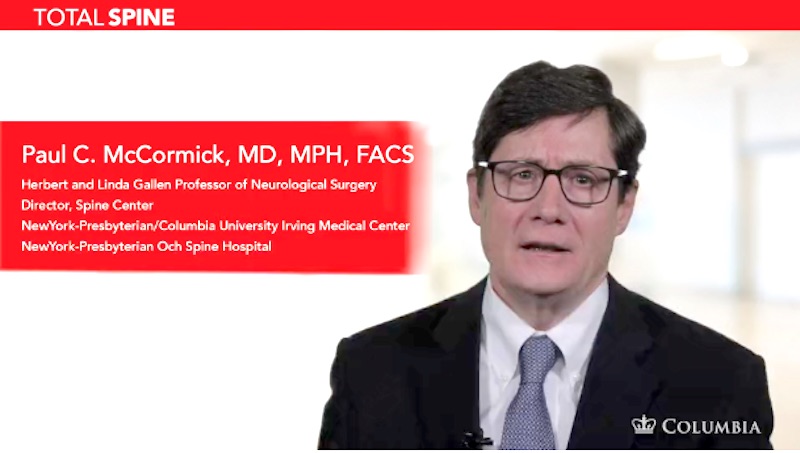Basilar = having to do with the base of the skull
Invagination = an in-folding
Basilar invagination is a condition in which a vertebra (bone) at the top of the spine moves up and back, toward the base of the skull. In this abnormal position, the bone may compress the brain stem and spinal cord. At The Spine Hospital at The Neurological Institute of New York, we specialize in treating basilar invagination.
Basilar invagination can be congenital (present at birth) or acquired (develop as a result of injury or disease).
To understand more about basilar invagination, it helps to understand a little about the junction between head and neck. This is an area where many important structures come together: it is also the junction between the nervous system tissue of brain and spinal cord, as well as between the bones of the skull and spine.
The brain is protected by the bones of the skull, while the spine is protected by the bones of the spinal column. The brain stem is a part of the brain that emerges from its base. It is long and roughly cylindrical–like a stem–and it provides the connection between brain and spinal cord. It leaves the skull through a circular opening in the skull base called the foramen magnum. The brain stem then connects with the spinal cord, which travels down the spinal column in the neck (and beyond).
The spine in the neck is called the cervical spine. The individual bones of the cervical spine, called vertebrae, are named according to a simple pattern. The names all start with the letter “C” for cervical, followed by a number that indicates their position. C1 is at the very top of the spine, just below the skull. C1 supports the weight of the skull. C2, the second vertebra, is underneath C1.
The joint between C1 and C2 is unusual–it allows much more movement than any other spinal joint. This is the joint that allows the head to turn, rotate and nod. One special feature of this joint is a peg of bone, about the size of the tip of a pinky finger, that sticks up from the front of C2 and fits into a groove in C1. It’s called the dens, or odontoid process.
In basilar invagination, C2 and the dens move out of alignment: back and up, toward the foramen magnum. In this position, the dens may compress the brainstem and/or the top of the spinal cord.
Like Chiari malformation, a similar condition, basilar invagination reduces the amount of space available for the brainstem and/or the top of the spinal cord.
| 

